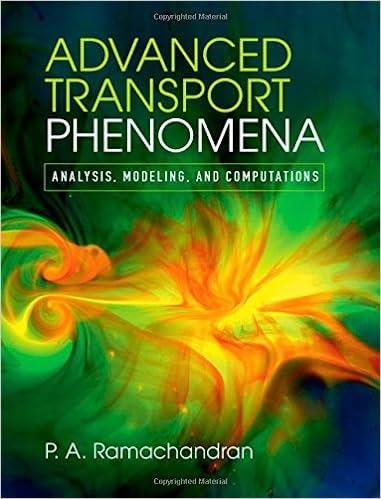Perform the order-of (-epsilon^{2}) approximation for the problem of diffusion with reaction in a catalyst of variable
Question:
Perform the order-of \(-\epsilon^{2}\) approximation for the problem of diffusion with reaction in a catalyst of variable activity. Compare the flux with that obtained from the BVP4C solver in MATLAB. Perform computations for \(\phi\) of 10 , 20, and 30.The results are 9.7313. 19.7416, and 29.745, respectively.
Now consider the problem of varying catalyst activity with the maximum activity at the center. The diffusion-reaction model is now given by
\[\epsilon \frac{\partial^{2} c}{\partial x^{2}}=c(1-x)\]
Perform a perturbation analysis for the problem. Use MAPLE or other programs to solve the \(c_{0}, c_{1}\), etc. problems. You will note that the \(c_{0}\) problem is an Airy function. Derive an approximate formula for the effectiveness factor.
Verify the following results obtained from BVP4C:

Note that \(\epsilon\) is equal to \(1 / \phi^{2}\). The flux, \(p\), is at the surface of the catalyst.
Step by Step Answer:

Advanced Transport Phenomena Analysis Modeling And Computations
ISBN: 9780521762618
1st Edition
Authors: P. A. Ramachandran





